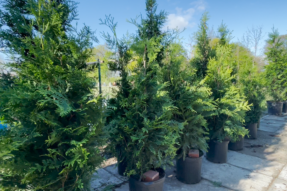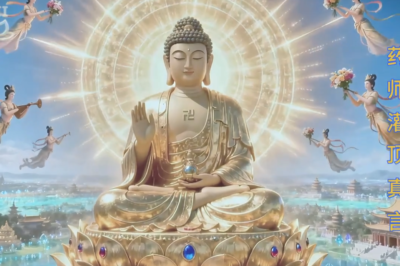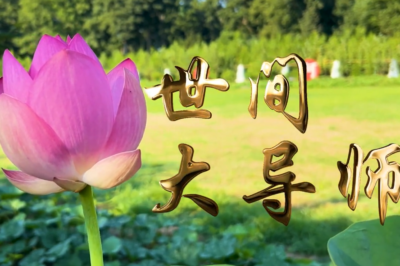Real Stories

[dzs_videogallery id="realstories02" start_item="16"] It was an ordinary d...

[dzs_videogallery id="realstories02" start_item="15"] After Fang's family ...

<!–– --> [dzs_videogallery id="realstories02" start_item="11"] Th...

I am a man who smoked and drank for 26 years. I resolved to ...

[dzs_videogallery id="realstories02" start_item="13"] Most people are awar...

[dzs_videogallery id="realstories02" start_item="12"] I started drinki...
Da Mo Zu Shi – Master of Zen in China
Published:2014/08/08 Venerable Masters Views:2304
The Patriarch’s Arrival from the West
It is said that Patriarch Dharma was the third son of King Xiangzhi of India, the twenty-eighth disciple of Shakyamuni Buddha, and the twenty-eighth patriarch of Chan Buddhism in India. After receiving the true teachings of Buddhism from his master, Dharma asked where he should go to spread the teachings. His master instructed him to go to China and told him not to go south, as the rulers there were overly ambitious and could not understand the true essence of Buddhism.
Patriarch Dharma sailed to Guangzhou, China. A monument marking the place where he landed is known as “The First Landing Place from the West,” and the ancient “Hualin Temple” was built there, originally named “Xilai An.” In the stone pagoda within the temple, there are 21 relics of the true body of Shakyamuni Buddha, which are believed to have been enshrined by Patriarch Dharma himself.
Emperor Wu of Liang: No Merit in Building Buddha Statues
Years after arriving in Guangzhou, Patriarch Dharma gradually gained recognition, eventually drawing the attention of Emperor Wu of Liang, a devout Buddhist, who invited him to Nanjing for an audience.
In the early years of his reign, Emperor Wu implemented reforms, earned popular support, and strengthened the nation. Among the emperors of the Southern Dynasties—Song, Qi, Liang, and Chen—he stood out for his political and military talents. Additionally, he was a man of many talents, highly educated, and a fervent believer in Buddhism. Emperor Wu issued edicts mandating nationwide devotion to Buddhism, oversaw the construction of countless temples and Buddha statues, and supported the monastic community. During his reign, Liang boasted nearly 3,000 temples and over 820,000 monks and nuns. He himself renounced his throne four times, forcing his ministers and the royal family to raise enormous sums to redeem him from the monastery, earning him the nickname “Bodhisattva Emperor.”
Emperor Wu, eager to showcase his accomplishments, met Patriarch Dharma not to seek enlightenment but to boast of his deeds, hoping for praise. According to The Anthology of the Patriarchal Hall (Zutangji), the emperor asked, “Since ascending the throne, I have saved countless people, built temples, transcribed sutras, and crafted statues. What merit have I gained?”
Patriarch Dharma replied, “No merit.”
Shocked, the emperor asked, “Why no merit?”
The patriarch explained, “These are minor fruits of the human and celestial realms, tainted causes that resemble shadows following forms. Though they may arise from good intentions, they do not embody true reality.”
The emperor then asked, “What constitutes true merit?”
The patriarch responded, “Pure wisdom, perfect and radiant, inherently empty and tranquil. Such merit is not sought through worldly means.”
Emperor Wu, unable to grasp the patriarch’s teaching, became disheartened and fell silent. A man devoted to ascetic practices and scriptural study, the emperor showed little interest in the Chan Buddhist principle of direct insight into one’s true nature. Seeing that their dialogue was unproductive, Patriarch Dharma left the palace to seek disciples with deeper understanding.
Emperor Wu missed the rare opportunity to recognize the patriarch’s profound teachings. Later, his governance faltered as he indulged the nobility, neglected the rule of law, and allowed decadence to flourish. Corruption in the bureaucracy drained the people’s resources, leaving them in misery, while the military grew weak and ineffective. Capitalizing on this, the Eastern Wei defector Hou Jing launched a rebellion, captured Nanjing, and besieged Emperor Wu in Taicheng for four months. The emperor ultimately died of hunger and cold, meeting a tragic end.
Shenguang Fails to Understand the Patriarch’s Teachings
At the time, there was a monk named Shenguang who preached at Gaozuo Temple on Yuhua Terrace in Nanjing. Renowned for his eloquence, he drew crowds of nobles, officials, and commoners alike. People praised his sermons, claiming, “When Shenguang speaks, heavenly flowers descend, and golden lotuses spring from the earth.”
Intrigued, Patriarch Bodhidharma decided to visit. Shenguang, draped in his kasaya robe, sat atop a grand platform, delivering a resounding sermon to a captivated audience. The reputation preceding him was no exaggeration.
As Bodhidharma approached the platform, he handed Shenguang a piece of paper. Curious, Shenguang paused his sermon and, assuming the paper contained praise from the Indian monk, eagerly opened it. To his surprise, the paper bore no words—only the drawing of a pita bread.
Bodhidharma said, “Your sermon is excellent. This pita bread is for you to eat.” Shenguang immediately understood the subtle rebuke. The illustration was a metaphor for “drawing a bread to stave off hunger,” implying that his teachings were merely ornamental, offering no real sustenance or insight into the essence of Buddha’s teachings.
Although Shenguang felt slighted, he remained composed before the audience and continued his sermon. But Bodhidharma persisted, handing him another paper with the same pita bread drawing. This time, Shenguang’s frustration boiled over.
Furious, he shouted, “My teachings manifest heavenly flowers and golden lotuses, clearly proving their legitimacy! Yet you, a monk from India, dare to humiliate me publicly and defame the Dharma!” Seizing the steel-beaded prayer necklace around his neck—a weapon in emergencies—he struck Bodhidharma on the mouth.
Bodhidharma, who had hoped to enlighten Shenguang, stood gazing upward at the platform when the blow landed. Two teeth were knocked out. Fearing the saint’s teeth hitting the ground would bring calamity—causing drought for two years across 3,000 miles—Bodhidharma chose to swallow them. The idiom “swallowing one’s broken teeth” originates from this event, symbolizing enduring great insult without complaint.
Recognizing that Shenguang was not yet ready to awaken, Bodhidharma sighed and departed. Recalling his master’s earlier advice that southern China was ill-suited for spreading the Dharma, he began traveling north toward Henan Province.
Shenguang, satisfied that he had taught the Indian monk a lesson. Then he encountered the black and white guardians of death, Black Impermanence and White Impermanence.
“I teach so eloquently that heavenly flowers and golden lotuses manifest. I’ve attained great merit and liberated myself from the cycle of life and death. Why are you here to take me?” Shenguang demanded.
“You have not escaped life and death,” they replied. “The person who handed you the paper has.” With that, they tightened their ropes around Shenguang’s neck. He screamed for help and awoke in terror, realizing it was all a dream.
Shenguang then understood his arrogance and the profundity of the opportunity he had missed. Regretful, he set off to pursue Bodhidharma, only to find him crossing the Yangtze River. With no ferry in sight, Bodhidharma plucked a single reed, placed it on the water, and, standing on it, floated effortlessly across the river. The reed, fragile as it appeared, bore him like a breeze over the vast expanse.
Reaching the riverbank, Shenguang could only watch in awe. Unable to match Bodhidharma’s miraculous feat, he searched for another way across the river.
A good advisor reflected: “A chance encounter on the water humbled many a proud soul. That single reed demonstrated the truth of the Five Aggregates as empty, utterly untainted, vast in spirit—Chan teachings for those of the highest capacity.”
Nine Years of Meditation Facing the Wall to Guide Shenguang
Patriarch Bodhidharma traveled northward until he reached Mount Song’s Five Breasts Peak, where he took residence. Climbing to the summit of Mount Shaoshi, he settled in a cave to meditate. Shenguang, after tirelessly searching, finally found Bodhidharma meditating there. Overcome with remorse, Shenguang knelt before the cave, begging the patriarch for forgiveness and to pass on the Dharma to him.
Bodhidharma glanced at him but said nothing, continuing his meditation while facing the wall. For nine years, Bodhidharma meditated in silence, while Shenguang knelt outside the cave for the same nine years. Though it seemed he was merely sitting, Bodhidharma was waiting—waiting for the right moment to guide Shenguang, the true inheritor of the great Dharma. Over time, Bodhidharma’s shadow became imprinted on the cave’s stone wall, a testament to his years of meditation.
At the upper part of Five Breasts Peak’s central peak, near the summit, lies a natural stone cave. The cave is about 3 meters high and wide, and roughly 2 zhang (approximately 6.6 meters) in length. The square-shaped entrance faces the sun, allowing fresh air to flow through. In front of the cave is a small, compact grassy clearing, surrounded by dense shade. This is Bodhidharma’s famous “Meditation Cave.”
Inside, on the “Meditation Stone,” the faint image of Bodhidharma in meditation remains visible—creases in his robes can still be discerned, resembling a subtle ink painting. During the Cultural Revolution, Red Guards attempted to chisel the image from the stone wall. However, the imprint had penetrated deeply into the rock, and even after the surface was chipped away, the image remained clear and intact.
Red Snow Falls from the Sky, the Great Dharma Is Passed On
One harsh winter, as heavy snow blanketed the land, Bodhidharma meditated in his stone cave while Monk Shenguang continued kneeling outside. Despite the bitter cold, Shenguang did not dare to step into the cave since Bodhidharma had not spoken to him. The snow piled higher and higher, eventually reaching Shenguang’s waist. Seeing this, Bodhidharma realized the time had come after nine long years of waiting. He finally spoke, “Why are you still kneeling there in such heavy snow?”
Overwhelmed with emotion, Shenguang burst into tears at hearing Bodhidharma address him for the first time. “I seek the Dharma,” he replied, “Please, Master, teach me the path to liberation from the cycle of birth and death!”
Bodhidharma then passed on the teachings of Zen to Shenguang—the profound method of “directly pointing to the mind, seeing one’s true nature to attain Buddhahood, eschewing written scriptures, and transmitting outside traditional teachings.” He also gave Shenguang the Dharma name Huike and bestowed upon him his robe and bowl as symbols of transmission. Huike thus became the second patriarch of Chinese Zen Buddhism.
In the Tang Dynasty, under the Sixth Patriarch Huineng, Zen flourished across China, branching into five distinct schools and continuing to thrive through successive generations. This legacy fulfilled Bodhidharma’s prophecy: “A single flower blooms into five petals.”
Pre: Vimalakīrti



![[Video] A Monumental Milestone [Video] A Monumental Milestone](https://en.damiok.org/wp-content/uploads/2025/05/20250514lishidefengbei-287x191.png)



![[Dance] Enlightenment of Rice Transplanting [Dance] Enlightenment of Rice Transplanting](https://en.damiok.org/wp-content/uploads/2025/08/20250808chayangji-400x266.png)
![[Dance] Verse of Auspiciousness [Dance] Verse of Auspiciousness](https://en.damiok.org/wp-content/uploads/2025/08/20250808yuanjixiang-400x266.png)








